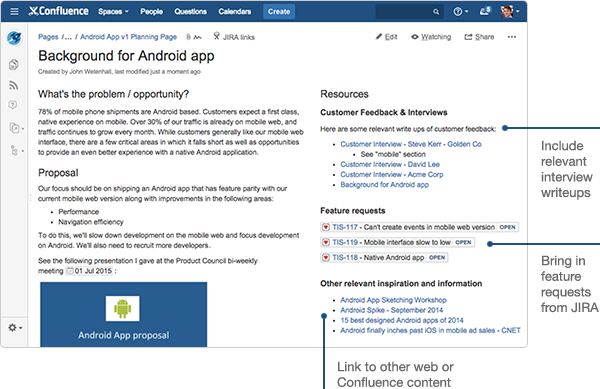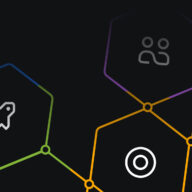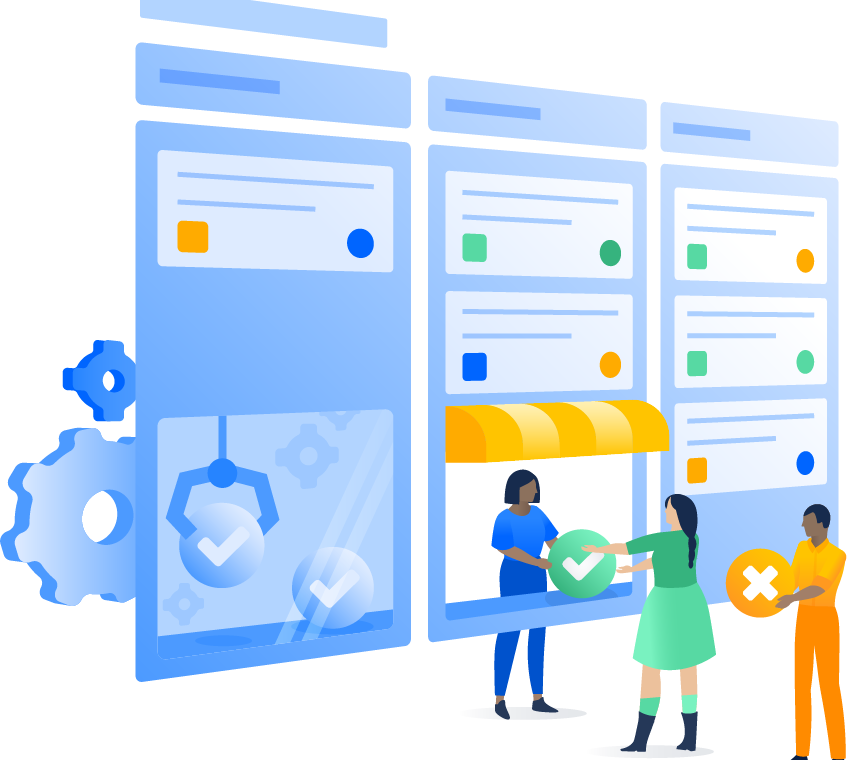Examples of capturing customer feedback for agile development
Customer feedback in agile development is a three-step process of gathering, documenting, and prioritizing. Here are examples from our product managers.
In agile development, you start the process of collecting customer feedback as soon as something ships so you can ensure a positive experience. This is done through various channels – for example: usability testing, product usage data, forums, emails, and more. After gathering feedback, the next step is dividing this feedback into different buckets (often user stories) for better prioritization.
But what’s the best way to capture and document customer feedback without letting anything slip through the cracks?
Examples are always helpful, so we reached out to two of our own: Jason Wong, Principal PM of Jira Software, and Sherif Mansour, Principal PM of Confluence. This is a two-part blog series that will follow how these two product managers coordinate the process of collecting customer feedback in agile development and prioritizing it against a roadmap.

Jason Wong, Jira Software Principal PM, Atlassian
I’ve been a Jira Software PM for two years and believe that customer feedback sits at the core of what we do as product managers. It’s one of the best ways of gathering qualitative and quantitative data to help us make well-informed decisions as we shape the customer experience. So how do we go from feedback to action?
For me, it’s a three-step process:
- Gather the customer’s feedback on their experience with the product
- Document this customer feedback in one place
- Move customer feedback into a backlog
An example of capturing customer feedback
Before I start asking customers for feedback, I usually define the process of gathering feedback to ensure everyone understands why we are seeking feedback on a particular feature. I also decide the channels that will work best to accomplish our goals. I personally enjoy in-person meetings and face-to-face time with our customers the most. It gives us a true understanding of their needs, their experience with the product, what problems they’re having, and what they’re trying to achieve. I find it easier to get feedback by talking to customers than through any other form of feedback.
However, while face-to-face customer visits are a great way to get a straight answer from customers, they’re expensive for us as a company and hard to scale. Conducting customer visits to gather feedback tend to cost a lot more time and resources than other channels (online surveys, emails, etc.).
So how else do you get customers to provide feedback? One way is to use an online feedback form or button in the product. For example, while iterating on Jira Software, we added a Sidebar Feedback collector, a simple link that’s placed strategically in the Jira Software sidebar. It’s easily accessible and available when the customer needs it, but also out of the way when they don’t. This proved to be very effective in gathering timely customer feedback without interrupting the user’s flow.
In addition to customer feedback within the product, we encourage users to submit or upvote feature requests and bugs through jira.atlassian.com (JAC). It not only enables our customers to be involved in the product development process, but it also allows them to stay up-to-date on the status of their requests.

Document your customer feedback in one place
Once we gather enough feedback on a specific feature, we bring it together on one Confluence page that includes links to customer interviews, feature requests, and any other resources. Putting it all in one place online makes it simple to reference later and gives team members and other stakeholders throughout the company the background they need, when they need it.
Our teams use the product requirements template in Confluence to document our customer feedback. Below is an example of one of the requirements pages we’ve created for projects. This page has all the relevant information in one place, like what’s the problem/opportunity, customer feedback and interviews, feature requests, and more.

Move customer feedback into a backlog
All of our work is tracked and prioritized in a product backlog in Jira Software. Customer feedback is added to our backlog as user stories, which get prioritized and estimated against all other competing tasks.

Now that we have all of the customer feedback in our backlog, it’s important to ensure we focus entirely on delivering the kind of positive experience the customer wants. There are several prioritization techniques we employ to prioritize customer feedback. Some product managers like to use MoSCoW (must have, should have, could have, won’t have), but I tend to take a more lean approach.
Other product managers might rank their backlog based on various metrics: user growth, ROI, satisfaction, NPS, or quality, for example. We rank stories in our backlog based on our ability to impact a goal that will yield the best customer experience, which is typically something we can measure.
For example, increasing usage of a feature by x% may be a goal that we set because using this feature will deliver the highest customer value based off of our customer feedback. It’s very important to pick a measure of success that acts like your best proxy for customer experience. As the team rallies behind this goal, you need to make sure that the measure of success is easy to understand and meaningfully explains the end customer value.
A good backlog is one that has been well broken down.
It’s easy to say that a backlog should be in a stack rank reflecting the highest customer value at the top. However, in practice, a good backlog is one that has been thoroughly broken down, and this sometimes means that each item in the backlog may not always be in the order of the highest customer value at the top.
In some cases, you need to get foundation work done first before being able to build the user-facing features. Creating an API is a great example of foundation work that needs to be prioritized before you build an online user-facing feature that relies on an API. I factor in a release plan that has several iterations – providing enough capacity to adapt the software – rather than trying to plan for a perfect linear burn of scope.
As you work with customers, your backlog is bound to change, so make sure you have spare capacity that accounts for that.
Capturing positive and negative customer feedback is one of the most important tasks of product management. It’s very hard to accomplish without identifying the effective ways of gathering feedback, prioritization criteria, and using the right tools.
Now that you’ve seen an example of how Jason does it, check out part two of this series where we talk to Sherif Mansour from Confluence.
. . .
Find more on customer feedback and other examples of agile practices on our microsite, The Agile Coach.










































